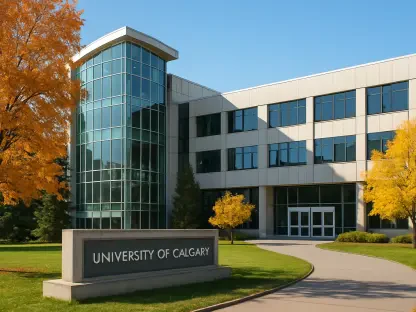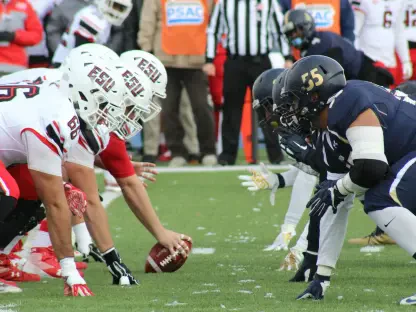The recent trend of prominent leaders at major public universities transitioning to private institutions has raised significant concerns about the future of public higher education. This move, exemplified by Southern Methodist University’s (SMU) recent hiring of President Jay Hartzell from the University of Texas at Austin, highlights the challenges facing public universities today. This ongoing shift underscores the challenges confronting public universities, particularly those situated in politically conservative states, and raises important questions about the long-term viability of public higher education.
The Trend: Movement from Public to Private Sector
High-Profile Transitions
The shift of university presidents from public to private institutions is becoming increasingly common. Notable examples include Greg Fenves leaving the University of Texas at Austin for Emory University and Carol Folt moving from the University of North Carolina at Chapel Hill to the University of Southern California. These transitions highlight a growing trend that underscores the challenges faced by public universities. Such moves reflect not just personal career advancements but also a broader trend where private institutions are increasingly able to lure top talent away from public universities. This migration of leadership signals deeper issues within the public sector that are causing even highly dedicated professionals to seek opportunities elsewhere.
Furthermore, these high-profile transitions shed light on the attractive benefits and perceived stability that private institutions offer. Unlike their public counterparts, private universities typically face fewer political and financial constraints, making them more appealing to potential leaders. The ability to offer better compensation packages, increased autonomy, and a more supportive working environment enhances their ability to attract top university presidents. As a result, the allure of private institutions becomes difficult for public university leaders to ignore, prompting an exodus that can have profound implications for higher education.
Systemic Issues Reflected
This trend is not merely about leadership changes but indicates deeper systemic issues within public institutions. The movement of top talent to private universities suggests that public universities are struggling to retain their leaders due to various pressures and challenges. These issues are particularly pronounced in conservative, “red” states, where public universities face significant ideological and financial pressures. Legislators in these states often impose restrictive policies aimed at controlling educational content, reducing funding, and diminishing academic autonomy. Such pressures create a hostile environment that makes it challenging for public university presidents to effectively lead their institutions.
Additionally, the burden of dealing with frequent legislative interventions and ideological attacks takes a toll on the morale and motivation of public university leaders. The continuous need to navigate political minefields, defend academic freedom, and secure adequate funding diverts their focus from crucial educational objectives. Consequently, the systemic issues plaguing public universities result in a talent drain as leaders seek more stable and supportive environments in the private sector. The long-term consequences of this trend could potentially weaken the overall quality and reputation of public higher education.
Challenges Facing Public Universities
Ideological Attacks and Legislative Pressure
Public universities are under relentless ideological attacks from state legislators. These challenges go beyond budget or management criticisms and aim to dismantle the institutions themselves. Legislative efforts to reduce tenure protections, impose anti-Diversity, Equity, and Inclusion (DEI) measures, and restrict educational content are examples of how public universities’ autonomy is being threatened. Such legislative interventions seek to reshape the values and priorities of public higher education institutions, pushing them towards a more ideologically driven agenda.
This legislative pressure creates an environment where public universities find themselves constantly defending their core values and principles. The imposition of restrictive policies undermines the ability of these institutions to provide a comprehensive and inclusive education. Moreover, the continuous ideological attacks foster a climate of uncertainty and fear among faculty and administrators, who worry about potential repercussions for expressing their views or pursuing certain areas of research. This hostile atmosphere not only affects the quality of education but also makes it increasingly difficult for public universities to attract and retain talented leaders.
Reduced Funding and Autonomy Threats
Years of persistent underfunding have strained public universities’ resources, affecting their ability to maintain operational and academic standards. The push for policies enforcing institutional neutrality has further hampered these universities’ ability to effectively advocate for their missions, staff, and students. The cumulative impact of these challenges creates a hostile working environment for university presidents, making it difficult for them to lead effectively. Financial constraints force public universities to make difficult decisions, often resulting in the reduction of faculty positions, academic programs, and student services.
In addition, the erosion of autonomy through restrictive policies further compounds the difficulties faced by public university leaders. Efforts to limit tenure protections, impose curriculum changes, and curtail DEI initiatives undermine the ability of these institutions to fulfill their educational mission. The loss of autonomy and reduced funding not only hinder the ability to attract top-tier talent but also threaten the very essence of public higher education. The resulting environment of constant struggle and uncertainty can make it nearly impossible for university presidents to drive meaningful change and innovation within their institutions.
Short-Term Gains for Private Institutions
Attracting Top Talent
Amid these challenges, private institutions find themselves in an advantageous position. They can attract top talent from public universities by offering better funding and a more politically stable environment. This has allowed private universities to capitalize on the turmoil facing public institutions, enhancing their own academic and administrative capacity. The ability to offer competitive salaries, robust research opportunities, and a supportive work environment makes private universities particularly appealing to public university leaders facing constant legislative and financial pressures.
The draw of private institutions extends beyond mere financial incentives. The promise of operating within an environment free from political interference and ideological battles allows top talent to focus on advancing their academic and administrative goals. This increased stability creates a more conducive space for innovation, fostering an environment where academic excellence can flourish. Consequently, private universities gain the upper hand in attracting visionary leaders who can drive their institutions towards greater achievements.
Immediate Benefits
While private universities may enjoy immediate benefits from attracting leaders from public institutions, this opportunistic approach may ultimately harm the broader higher education community. The undermining of public universities could erode public trust in higher education as a whole, which is particularly concerning given the current environment where the value of higher education is frequently questioned. If public universities continue to lose their leaders to private institutions, they risk becoming less effective at fulfilling their educational missions, leading to a decline in the quality of education provided.
Furthermore, the long-term consequences of this trend could result in a higher education landscape that is increasingly divided. As private universities thrive and public institutions struggle, access to quality education may become more unequal, with students from disadvantaged backgrounds bearing the brunt of this divide. The poaching of talent from public universities not only weakens these institutions but also jeopardizes the overall integrity of the higher education ecosystem. In the absence of concerted efforts to address these disparities, the erosion of public trust in higher education could continue to grow, leading to widespread skepticism about the value and purpose of advanced learning.
Long-Term Implications
Erosion of Public Trust
The long-term implications of this trend are troubling. The erosion of public trust in higher education could have far-reaching consequences for the entire sector. Public disillusionment with the academy is on the rise, and the undermining of public universities could exacerbate this issue, leading to a decline in support for higher education as a whole. As public confidence wanes, the willingness of taxpayers and policymakers to invest in higher education diminishes, creating a vicious cycle of reduced funding and declining quality.
Moreover, the perception that higher education serves only the elite, fueled by the success of private institutions at the expense of public universities, could further alienate the public. If the broader population begins to view higher education as inaccessible and disconnected from societal needs, the very foundation of academic institutions could be called into question. The erosion of public trust could jeopardize the ability of colleges and universities to fulfill their critical role in advancing knowledge, fostering social mobility, and addressing complex global challenges.
Broader Impact on Higher Education
The broader impact of this trend on higher education cannot be ignored. The weakening of public universities could lead to a less diverse and less accessible higher education landscape. This would be detrimental to the mission of higher education, which aims to provide transformational opportunities to all students, regardless of their background. The diminishing influence and quality of public universities could widen the gap between those who have access to prestigious private institutions and those who do not, perpetuating existing social inequalities.
Furthermore, the loss of diversity within higher education institutions could hinder the breadth and depth of academic inquiry. Public universities have historically played a crucial role in fostering diverse perspectives and addressing a wide range of societal issues. As these institutions continue to face mounting challenges, their ability to contribute to meaningful research and innovation may be compromised. This could lead to a less robust higher education ecosystem, limiting the capacity of academic institutions to drive progress and positively impact society.
Call to Action for Private Institutions
Championing Higher Education Ideals
Private universities must take an active role in advocating for the success of public higher education. They should utilize their platforms to promote the core values of higher education and oppose the politicization of academic institutions. By doing so, they can help protect the autonomy of public universities and ensure that higher education remains a vital part of society. Private institutions have the resources and influence to champion initiatives that safeguard academic freedom, promote inclusivity, and resist undue political interference.
Furthermore, private universities can amplify their impact by collaborating with public institutions on initiatives that benefit both sectors. By engaging in joint research projects, sharing best practices, and supporting community outreach programs, private institutions can help reinforce the importance of higher education as a public good. These efforts can contribute to a more cohesive and united higher education landscape, demonstrating that public and private institutions share a common mission to advance knowledge and serve society.
Advocating for Public Investment
Private institutions can use their influence to push policymakers towards increased funding for public universities and to resist anti-education policies. This advocacy is crucial to ensure that all students have access to quality postsecondary education, regardless of their background. By leveraging their networks and relationships with donors, private universities can help reinforce the message that investing in public education is essential for the well-being of society as a whole.
Moreover, private institutions can actively participate in public discourse, lending their voices to campaigns and initiatives that promote greater support for public higher education. By highlighting the interconnectedness of public and private institutions and the benefits of a strong public sector, private universities can help shift the narrative towards a more inclusive and supportive approach to education. This collective advocacy can lead to significant policy changes that enhance the stability and sustainability of public universities.
Forming Partnerships
Collaborative efforts between public and private institutions can foster joint research, initiate transfer and reciprocal enrollment programs, and share resources to broaden access and opportunity. These partnerships can bridge the growing divide between the two sectors and help ensure the sustainability of higher education as a whole. By working together, public and private universities can leverage their respective strengths to create innovative solutions that address common challenges and advance the mission of higher education.
Additionally, partnerships between public and private institutions can promote greater understanding and collaboration across the higher education landscape. Joint initiatives can facilitate the sharing of knowledge, expertise, and best practices, leading to more effective strategies for addressing complex issues. By fostering a spirit of collaboration, public and private universities can create a more cohesive and resilient higher education system that benefits all students and stakeholders.
Closing Remarks
The emerging trend of notable leaders at major public universities moving to private institutions has sparked serious concerns about the future of public higher education. A prime example of this trend is Southern Methodist University’s (SMU) recent appointment of Jay Hartzell, who was previously the president at the University of Texas at Austin. This shift is indicative of the broader challenges that public universities are facing today. Specifically, it highlights the difficulties for public institutions, especially those located in politically conservative states. This ongoing exodus prompts critical questions regarding the long-term viability and sustainability of public higher education. How these institutions will adapt to such changes remains to be seen, but it’s evident that the pressures are mounting. The ability of public universities to attract and retain top talent amid political and financial pressures could shape their future trajectory significantly, ultimately impacting their role in providing accessible education to a diverse population.









